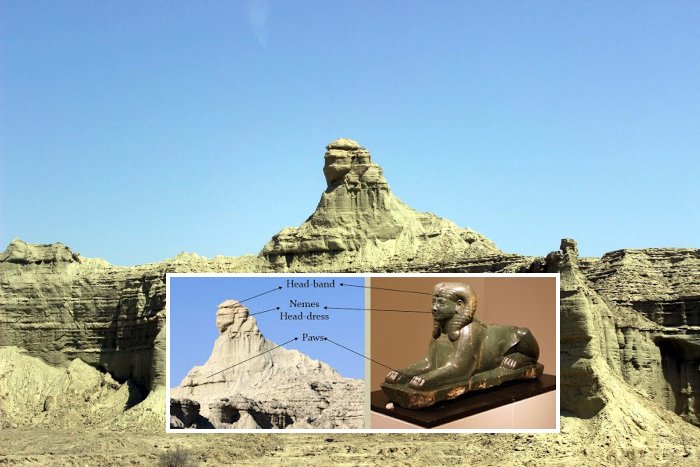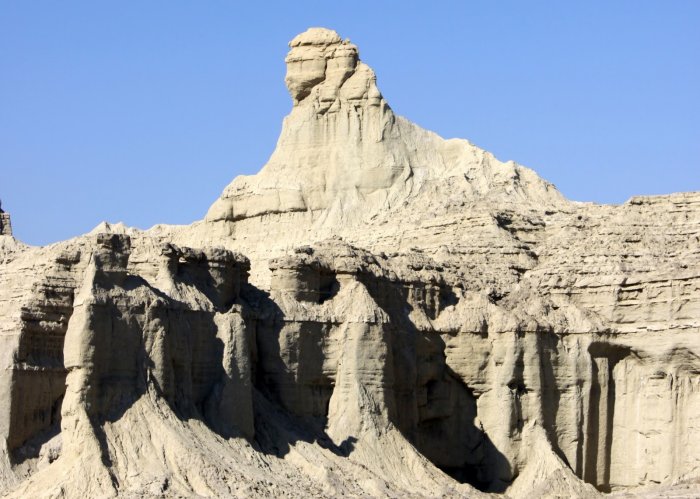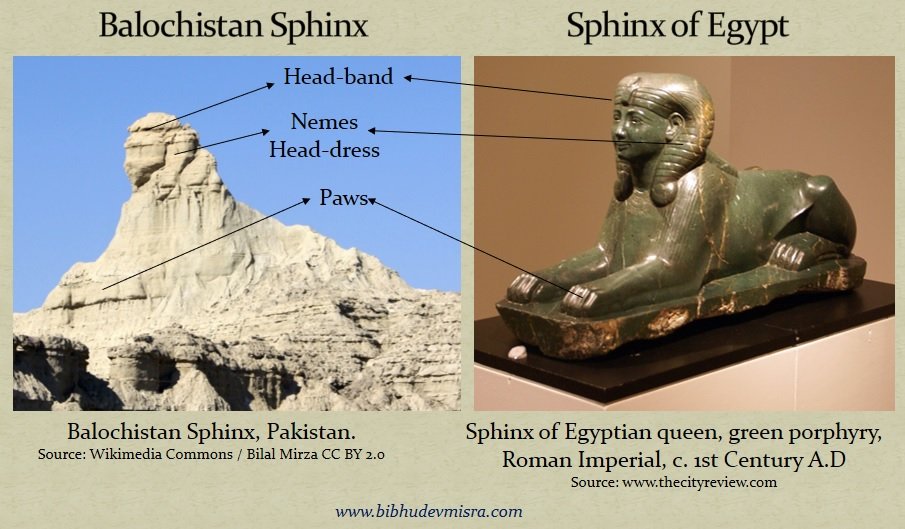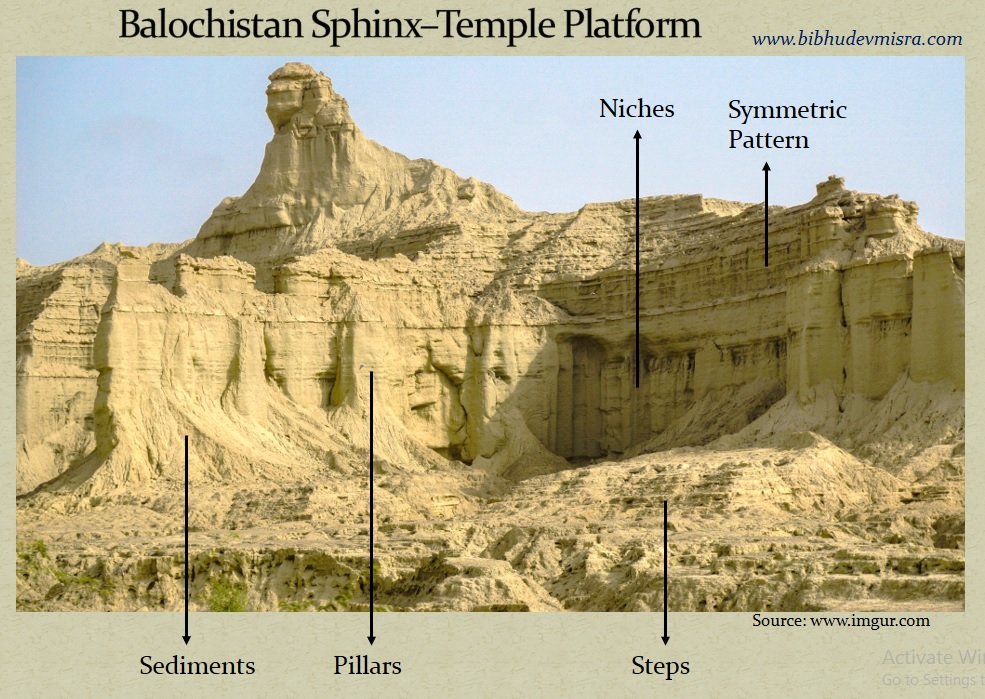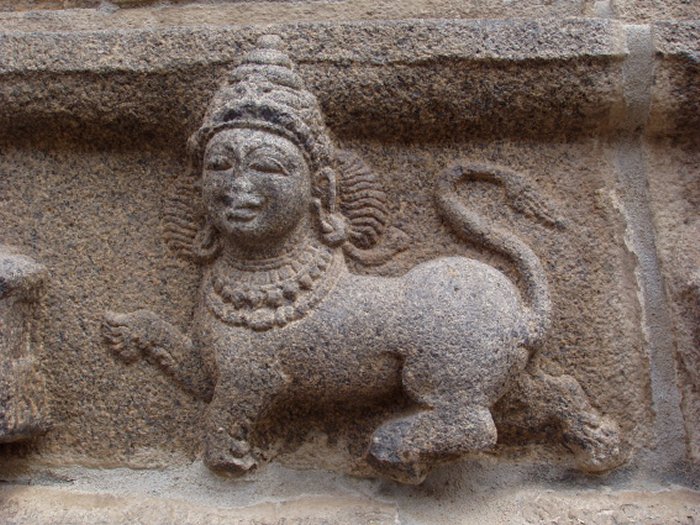Mysterious Balochistan Sphinx Has An Ancient Story To Tell – But Is An Advanced Ancient Civilization Or Mother Nature Hiding Behind The Story?
Ellen Lloyd - AncientPages.com - Do we see artificial structures in works created by Mother Nature simply because we want to believe they are man-made? Or do we deliberately dismiss ancient constructions as natural formations because these buildings contradict our version of recorded history?
Can we judge something like a natural formation without conducting proper archaeological and scientific examination? Some so-called natural formations are baffling, and the Sphinx of Pakistan belongs to that category.
The Balochistan Sphinx is far from as famous as the Great Sphinx of Giza in Egypt. Located on the Makran coastline of Southern Balochistan in Pakistan's Hingol National Park, the Balochistan Sphinx has an ancient story to tell.
Most think the Balochistan Sphinx was carved by wind and rain and is nothing more than a natural formation, but some are of a different opinion.
Balochistan Sphinx in Pakistan - Credit: Wikipedia
The Sphinx of Pakistan has stood there unnoticed and unexplored for centuries. It was first in 2004 that the public learned about its existence.
Researcher Bibhu Dev Misra from the Indian Institute of Technology (IIT) Kharagpur and the Indian Institute of Management (IIM) Kolkata believes the Balochistan Sphinx is a huge architectural complex created by an advanced ancient civilization. According to Bidhu Dev Mistra Balochistan Sphinx’s headdress closely resembles the Nemes headdress of the Egyptian pharaoh.
The Indian researcher also points out that ear-flaps can be clearly seen on the Balochistan Sphinx and contours of the reclining forelegs of the sphinx, which terminate in very well-defined paws.
“It is ridiculous to suggest that nature has carved out a statue which resembles a well-known mythical animal to such an extraordinarily high degree. It appears that absolutely no attempt has been made for their restoration. Both the authorities and the journalists are only too happy to pass them of as “natural formations”. The situation can only be salvaged if international attention can be drawn to these grand structures and if teams of archaeologists (as well as enthusiasts) from around the globe visit these enigmatic monuments to research, restore, and publicize them.
Is the Balochistan Sphinx a cousin of the Egyptian Sphinx? Credit: Bibhu Dev Misra
The importance of these ancient monuments of the Makran coast can hardly be overstated – they could literally be thousands of years old – and they can potentially provide us with important clues to uncover humanity’s mysterious past,” Bibhu Dev Misra says.
Was the Balochistan Sphinx erected to guard an ancient temple? Credit: Bibhu Dev Misra
Bibhu Dev Misra’s research into the Balochistan Sphinx is impressive and very interesting.
Raja Deekshithar (1949-2010), discovered the Sphinx in the Indian civilization concluded that the primary position of the mythological animal was near the temple gateway, acting as a guardian of the sanctuary. If the Balochistan Sphinx is man-made, was it erected to guard an ancient unknown temple on the Makran coastline?
As we wrote previously on Ancient Pages, the Sphinx was by no means limited not ancient Egypt.
The Sphinx was considered a keeper of the holy places and the mysteries of life. It was a guardian of knowledge and symbol of riddles and intrigue. Regarded as a creature full of secrets, several ancient civilizations erected a sphinx in their lands. We find evidence of the Sphinx’s existence in ancient Greece, Babylon, India and other places.
Sphinx of India - Credit: Rajadeekshitar - CC BY-SA 3.0
The Sphinx of India, known as purushamriga, has almost always elongated earlobes decorated with ornamental disks. In Sanskrit, “Purushamriga” means human-beast. There are several references to this divine being in the great Indian epics, the Ramayana, the Mahabharata, and some of the Puranas. We also encounter the Sphinx in Vedic literature.
Its numerous depictions carved in wood, metal, and painted are found in many temples of India.
Whether the Balochistan Sphinx is a man-made structure or a natural formation cannot be determined at this point. The Sphinx of Pakistan certainly does have an ancient story to tell. The question is, who is hiding behind the story – an advanced ancient civilization or Mother Nature?
Written by Ellen Lloyd – AncientPages.com
Updated on January 20, 2024
Copyright © AncientPages.com All rights reserved. This material may not be published, broadcast, rewritten or redistributed in whole or part without the express written permission of AncientPages.com
Expand for referencesMore From Ancient Pages
-
 1,750-Year-Old Fresco Travertines Buried Underground – Recovered In Ancient Laodicea
Archaeology | Mar 19, 2020
1,750-Year-Old Fresco Travertines Buried Underground – Recovered In Ancient Laodicea
Archaeology | Mar 19, 2020 -
 Werewolf – Ancient Worldwide Belief In Terrible Curse
Featured Stories | Jun 28, 2021
Werewolf – Ancient Worldwide Belief In Terrible Curse
Featured Stories | Jun 28, 2021 -
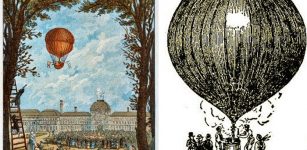 On This Day In History: First Experimental Hydrogen-Filled Balloon Reaches A 900m Altitude – On August 27, 1783
News | Aug 27, 2016
On This Day In History: First Experimental Hydrogen-Filled Balloon Reaches A 900m Altitude – On August 27, 1783
News | Aug 27, 2016 -
 Mysterious Books From The Unknown And ‘Impossible’ Coincidences
Featured Stories | Dec 30, 2020
Mysterious Books From The Unknown And ‘Impossible’ Coincidences
Featured Stories | Dec 30, 2020 -
 Real-Life Excalibur Found Underwater In Bosnia – Medieval Sword In Stone Pulled Out
Archaeology | Oct 31, 2019
Real-Life Excalibur Found Underwater In Bosnia – Medieval Sword In Stone Pulled Out
Archaeology | Oct 31, 2019 -
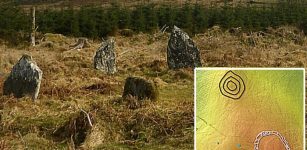 Baltinglass Hills: Prehistoric Irish Monuments May Have Served As Pathways For The Deceased – New Evidence
News | Apr 30, 2024
Baltinglass Hills: Prehistoric Irish Monuments May Have Served As Pathways For The Deceased – New Evidence
News | Apr 30, 2024 -
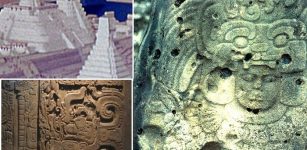 Tikal Of Maya: Sophisticated Culture That Experienced Humble Start, Golden Age, Wars And Decline
Featured Stories | Apr 4, 2022
Tikal Of Maya: Sophisticated Culture That Experienced Humble Start, Golden Age, Wars And Decline
Featured Stories | Apr 4, 2022 -
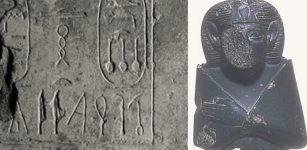 Sobekneferu: First Female Pharaoh In Ancient Egypt
Featured Stories | Mar 9, 2019
Sobekneferu: First Female Pharaoh In Ancient Egypt
Featured Stories | Mar 9, 2019 -
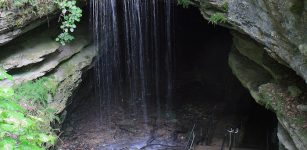 Historical Artifacts Found In The Mammoth Cave’s Mysterious Passageway
Archaeology | Jul 12, 2022
Historical Artifacts Found In The Mammoth Cave’s Mysterious Passageway
Archaeology | Jul 12, 2022 -
 Huge Ancient Underwater Structure And Stunning Artifacts Discovered Off The Coast Of Salamis
Archaeology | Jun 26, 2019
Huge Ancient Underwater Structure And Stunning Artifacts Discovered Off The Coast Of Salamis
Archaeology | Jun 26, 2019 -
 Prince Vseslav The Sorcerer And Werewolf – The Most Famous Ruler Of Polotsk
Featured Stories | Dec 29, 2021
Prince Vseslav The Sorcerer And Werewolf – The Most Famous Ruler Of Polotsk
Featured Stories | Dec 29, 2021 -
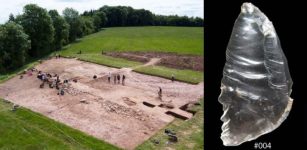 Prehistoric Brits Used Rare Rock Crystals To Mark Burial Sites – New Study
Archaeology | Aug 10, 2022
Prehistoric Brits Used Rare Rock Crystals To Mark Burial Sites – New Study
Archaeology | Aug 10, 2022 -
 Mysterious Biblical Celestial City And Its Connection To The North Star – Nonhuman Hands – Part 1
Biblical Mysteries | Feb 22, 2021
Mysterious Biblical Celestial City And Its Connection To The North Star – Nonhuman Hands – Part 1
Biblical Mysteries | Feb 22, 2021 -
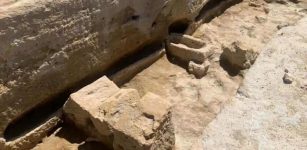 Rare Phoenician Necropolis Discovered In Andalucia, Spain Is Extraordinary, Scientists Say
Archaeology | May 2, 2022
Rare Phoenician Necropolis Discovered In Andalucia, Spain Is Extraordinary, Scientists Say
Archaeology | May 2, 2022 -
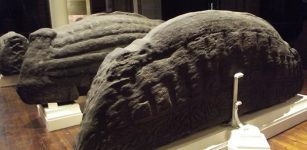 The Govan Stones – Treasures From The Viking Era In Britain
Featured Stories | Dec 27, 2015
The Govan Stones – Treasures From The Viking Era In Britain
Featured Stories | Dec 27, 2015 -
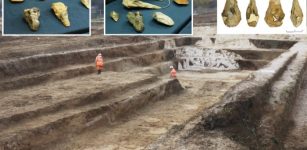 Rare Discovery: Giant Stone Artifacts Found On Ice Age Site In Kent
Archaeology | Jul 6, 2023
Rare Discovery: Giant Stone Artifacts Found On Ice Age Site In Kent
Archaeology | Jul 6, 2023 -
 2,000-Year-Old Celtic Dice Discovered In Poland
Archaeology | Oct 11, 2023
2,000-Year-Old Celtic Dice Discovered In Poland
Archaeology | Oct 11, 2023 -
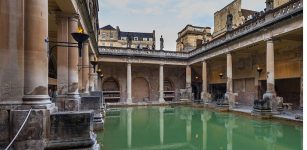 Ancient Skeletons Reveal Britain Suffered From Parasite Infections Since The Bronze Age
Archaeology | Apr 22, 2022
Ancient Skeletons Reveal Britain Suffered From Parasite Infections Since The Bronze Age
Archaeology | Apr 22, 2022 -
 Denisovan Family Tree: New Branches Revealed In Ancient DNA
Archaeology | Apr 12, 2019
Denisovan Family Tree: New Branches Revealed In Ancient DNA
Archaeology | Apr 12, 2019 -
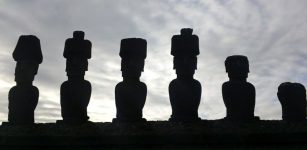 Ancient DNA Sheds New Light On Easter Island Mystery
Archaeology | Oct 13, 2017
Ancient DNA Sheds New Light On Easter Island Mystery
Archaeology | Oct 13, 2017

